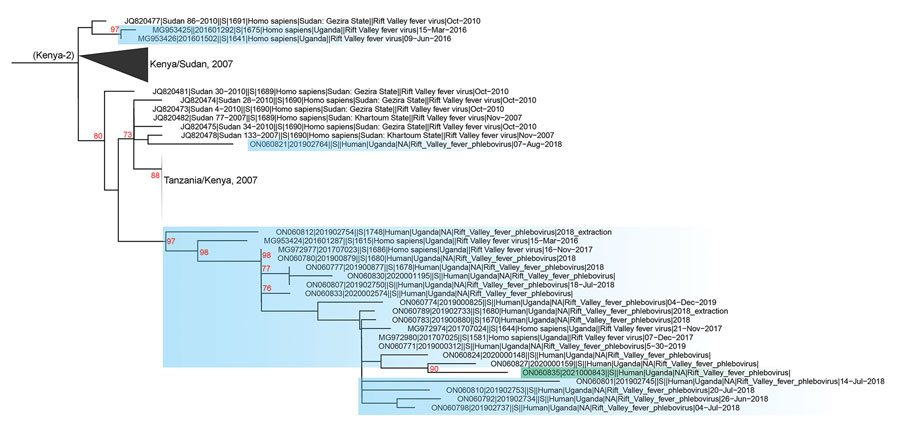Volume 28, Number 11—November 2022
Dispatch
Rift Valley Fever Outbreak during COVID-19 Surge, Uganda, 2021
Figure 2

Figure 2. Phylogenetic analysis of Kenya-2 clade Rift Valley fever virus small segment from an outbreak in Uganda, 2021, compared with available full-length segments from GenBank (accession numbers shown). Green shading indicates sequence from Uganda outbreak; blue shading indicates historic RVFV sequences from Uganda. Red numbers indicate nodes with bootstrap support >70%. Complete phylogenies of small and large segments are shown in the Appendix.
Page created: September 07, 2022
Page updated: October 24, 2022
Page reviewed: October 24, 2022
The conclusions, findings, and opinions expressed by authors contributing to this journal do not necessarily reflect the official position of the U.S. Department of Health and Human Services, the Public Health Service, the Centers for Disease Control and Prevention, or the authors' affiliated institutions. Use of trade names is for identification only and does not imply endorsement by any of the groups named above.